
Getting started:
Our software

Our talented engineering teams continue to innovate and develop critically-acclaimed and widely-used software products to help developers push the boundaries on what is possible with games and graphics applications.
With so many tools, SDKs, libraries, and effects available, if you’re new to GPUOpen, it’s not always easy to know where to start. This page is designed to be a helping hand to introduce you to what is available and point you in the right direction!
Note: GPUOpen also has an ever-increasing repository of documentation and videos, giving detailed support to developers in areas such as our hardware, programming, analysis, performance, and much more. We have a similar “getting started” page for this as well – why not take a look?
Jump to the section you need:
Tools
Our very popular Radeon Developer Tool Suite is a package containing several tools to help you analyze and optimize your graphics applications, and now includes ray tracing analysis. With support for Windows and Linux, and DirectX and Vulkan, our tool suite is the right place to start when you need to look at performance.
You can find out more and download the tool suite from any of the pages linked below.

Radeon™ Raytracing Analyzer
Radeon™ Raytracing Analyzer (RRA) is a tool which allows you to investigate the performance of your raytracing applications and highlight potential bottlenecks.

Radeon™ Memory Visualizer
Radeon™ Memory Visualizer (RMV) is a tool to allow you to gain a deep understanding of how your application uses memory for graphics resources.
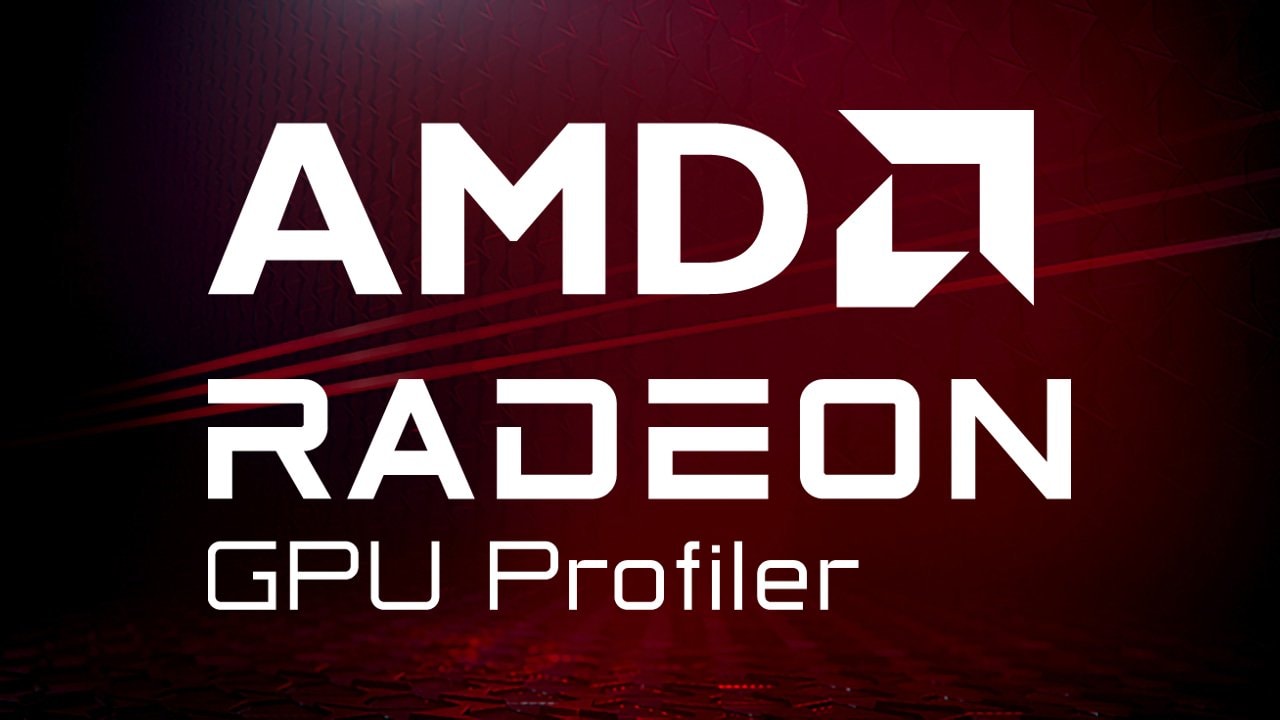
Radeon™ GPU Profiler
RGP gives you unprecedented, in-depth access to a GPU. Easily analyze graphics, async compute usage, event timing, pipeline stalls, barriers, bottlenecks, and other performance inefficiencies.

Radeon™ GPU Analyzer
Radeon GPU Analyzer is an offline compiler and performance analysis tool for DirectX®, Vulkan®, SPIR-V™, OpenGL® and OpenCL™.
These are not the only tools we provide. OCAT (for performance overlays) and Compressonator (for working with compressed assets) are also available through GPUOpen.
Videos
Our tools engineers frequently release videos to help developers get the most out of our tools. These are a great way to get started! Links to the slides can be found in the YouTube descriptions.

Raytracing Performance Revealed – How to Optimize your Game with the Radeon™ Developer Tool Suite – YouTube link
In this presentation, we demonstrate how to use Radeon™ GPU Profiler and Radeon™ Raytracing Analyzer, to illuminate performance issues.

AMD RDNA™ 2 – Radeon™ Developer Tool Suite – YouTube link
This video describes the benefits of bundling the Radeon™ GPU Profiler, Radeon™ Memory Visualizer, Radeon™ GPU Analyzer, and the Radeon™ Developer Panel into a single downloadable suite.

AMD RDNA™ 2 – Radeon™ Memory Visualizer 1.1 – YouTube link
This video describes the changes and improvements made to the Radeon™ Memory Visualizer update 1.1.

Curing Amnesia and Other GPU Maladies With AMD Developer Tools – YouTube link
This video introduces the new Radeon™ Memory Visualizer to help answer questions about memory allocations, resource bindings, page mappings, and more. Includes updates on RGP and RGA.
Presentations

Surfing the Wave(front)s with Radeon GPU Profiler - GDC 2019
Dominik Baumeister shows you how to use RGP to identify problems relating to barriers, async, and compression, explains the underlying issues, and tells you how to fix them!
Blogs
We are continually developing our tools, and our tools engineers will write new blog posts with every significant new update, to help you get the most out of the latest features.
There are too many to list here, so head on over to find our tools blogs on our software blogs page.
SDKs and libraries
We have a wide variety of libraries available, ranging from SDKs to give you access to GPU hardware information, to libraries that help you to manage memory when developing with low-level APIs Vulkan and Direct3D.
Besides the ones shown below, you can find lots more on our SDKs page.

AMD GPU Services (AGS) Library
The AMD GPU Services (AGS) library provides software developers with the ability to query AMD GPU software and hardware state information that is not normally available through standard operating systems or graphics APIs.

GPUPerfAPI
GPUPerfAPI provides access to GPU Performance Counters. It analyzes performance and execution characteristics of applications using a Radeon™ GPU.

Vulkan® Memory Allocator
VMA is our single-header, MIT-licensed, C++ library for easily and efficiently managing memory allocation for your Vulkan® games and applications.

D3D12 Memory Allocator
The D3D12 Memory Allocator (D3D12MA) is a C++ library that provides a simple and easy-to-integrate API to help you allocate memory for DirectX®12 buffers and textures.
Blogs
To help you get the best out of our libraries, our engineers often write blogs to assist. There are far too many to list here, but you should take a look at the SDKs section on our software blogs page.
Effects
While AMD FidelityFX™ Super Resolution is currently our most widely-known effect, our FidelityFX library of technologies does not end with FSR!
Now you can obtain all our FidelityFX technologies wrapped up in one easy-to-use package – the AMD FidelityFX SDK.

AMD FidelityFX™ SDK
The AMD FidelityFX SDK is our easy-to-integrate solution for developers looking to include FidelityFX features into their games.
Here’s the current list of AMD FidelityFX technologies – and growing!

AMD FidelityFX™ Contrast Adaptive Sharpening (CAS)
AMD FidelityFX Contrast Adaptive Sharpening (CAS) provides a mixed ability to sharpen and optionally scale an image.

AMD FidelityFX™ Single Pass Downsampler (SPD)
AMD FidelityFX Single Pass Downsampler (SPD) provides an AMD RDNA™ architecture optimized solution for generating up to 12 MIP levels of a texture.

AMD FidelityFX™ Combined Adaptive Compute Ambient Occlusion (CACAO)
AMD FidelityFX Combined Adaptive Compute Ambient Occlusion (CACAO) is an AMD RDNA™ architecture optimized implementation of ambient occlusion.

AMD FidelityFX™ Stochastic Screen Space Reflections (SSSR)
The AMD FidelityFX SSSR effect provides an open-source library to easily integrate stochastic screen space reflections into your game.

AMD FidelityFX™ Luminance Preserving Mapper (HDR Mapper)
AMD FidelityFX LPM provides an open-source library to easily integrate HDR and wide gamut tone and gamut mapping into your game.

AMD FidelityFX™ Denoiser
AMD FidelityFX Denoiser is a set of denoising compute shaders which remove artefacts from reflection and shadow rendering.

AMD FidelityFX™ Variable Shading
AMD FidelityFX Variable Shading drives Variable Rate Shading into your game.

AMD FidelityFX™ Parallel Sort
AMD FidelityFX Parallel Sort makes sorting data on the GPU quicker, and easier. Use our SM6.0 compute shaders to get your data in order.

AMD FidelityFX™ Super Resolution 1 (FSR 1)
AMD FidelityFX Super Resolution (FSR) is our open-source, high-quality, high-performance upscaling solution.
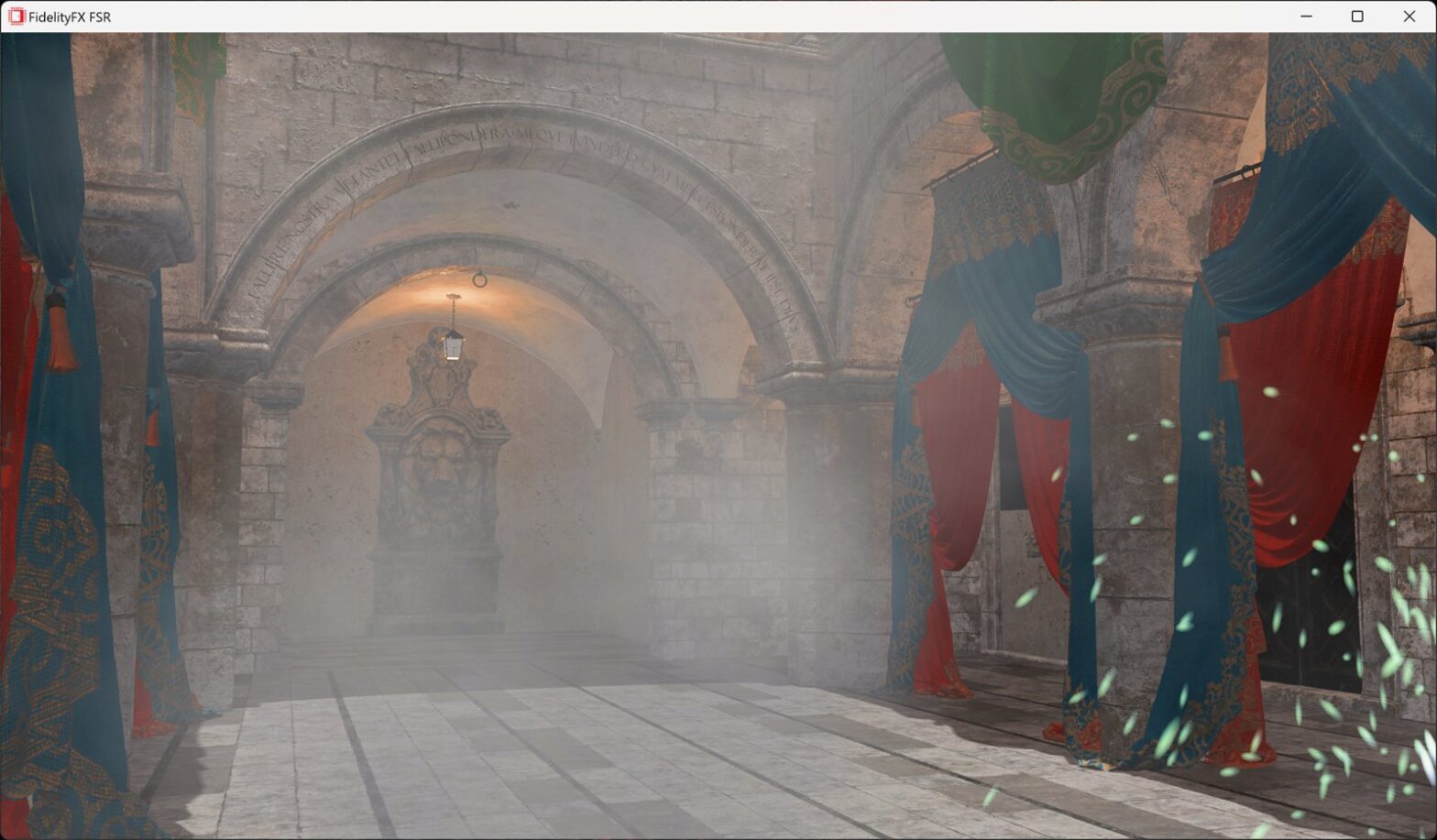
AMD FidelityFX™ Super Resolution 2 (FSR 2)
Learn even more about our new open-source temporal upscaling solution FSR 2, and get the source code and documentation!

AMD FidelityFX™ Blur
AMD FidelityFX Blur is an AMD RDNA™ architecture optimized collection of blur kernels from 3×3 up to 21×21.

AMD FidelityFX™ Depth of Field (DoF)
AMD FidelityFX Depth of Field is an AMD RDNA™-architecture optimized implementation of physically correct camera-based depth of field.

AMD FidelityFX™ Lens
AMD FidelityFX Lens is an AMD RDNA™ architecture optimized implementation of some of gaming’s most used post-processing effects.

AMD FidelityFX™ Super Resolution 3 (FSR 3)
Discover frame generation with AMD FidelityFX™ Super Resolution 3, and get the source code and documentation!

AMD FidelityFX™ Naming Guidelines in Game Titles
A set of guidelines for developers on how to present options in the game’s user interface to enable/disable AMD FidelityFX Effects.
Hybrid ray tracing
You don’t want to miss our hybrid ray tracing samples, also a part of the AMD FidelityFX SDK, which efficiently balance rasterization and ray tracing to help you maximise the impact of adding ray tracing to your games.

AMD FidelityFX™ Hybrid Shadows sample
This sample demonstrates how to combine ray traced shadows and rasterized shadow maps together to achieve high quality and performance.
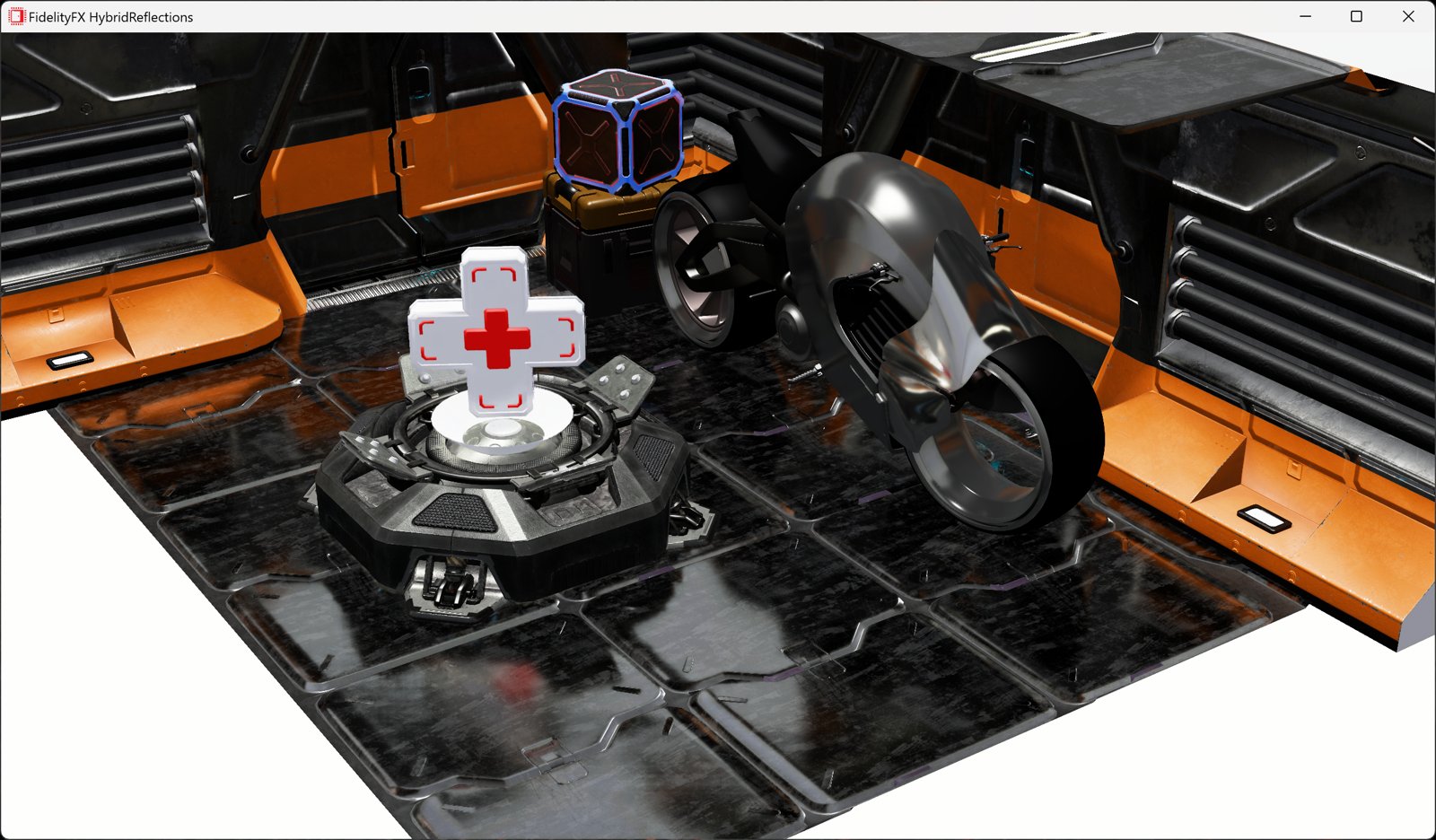
AMD FidelityFX™ Hybrid Stochastic Reflections sample
This sample shows how to combine AMD FidelityFX Stochastic Screen Space Reflections (SSSR) with ray tracing in order to create high quality reflections.
Cauldron framework
If you’re working with our effects, you’re going to need to know about Cauldron, our experimentation framework which you can use to try out our effects and also get started with your own development.

Radeon™ Cauldron Framework
Radeon Cauldron is our open-source experimentation framework for DirectX®12 and Vulkan®, provided in the AMD FidelityFX SDK.

glTFSample Cauldron Sample Project
This sample demonstrates how to use most of Cauldron’s features. It is also a useful reference for getting started with developing your own samples and prototypes.
And neither do our effects end with AMD FidelityFX – AMD TressFX is still widely used and developed, with plugins for popular engines.

TressFX
The TressFX library is AMD’s hair/fur rendering and simulation technology. TressFX is designed to use the GPU to simulate and render high-quality, realistic hair and fur.
Videos
Unsurprisingly, as our effects are so popular, we have a lot of videos produced by our engineers, often in collaboration with game developers where you can learn detailed information! Here are just some of our effects-related videos:

A guided tour of Blackreef: rendering technologies in Deathloop – YouTube link
This talk will deep-dive into the rendering technology of Deathloop. We will explore the challenges and lessons learned.

Breaking down the world of Athia: the technologies of Forspoken – YouTube link
This session covers the collaboration between AMD and Luminous Productions on their upcoming title: Forspoken.

FidelityFX™ Super Resolution 2 – YouTube link
FidelityFX Super Resolution 2.0 is AMD’s next generation upscaling technology. Check out our GDC talk to understand exactly how it works.
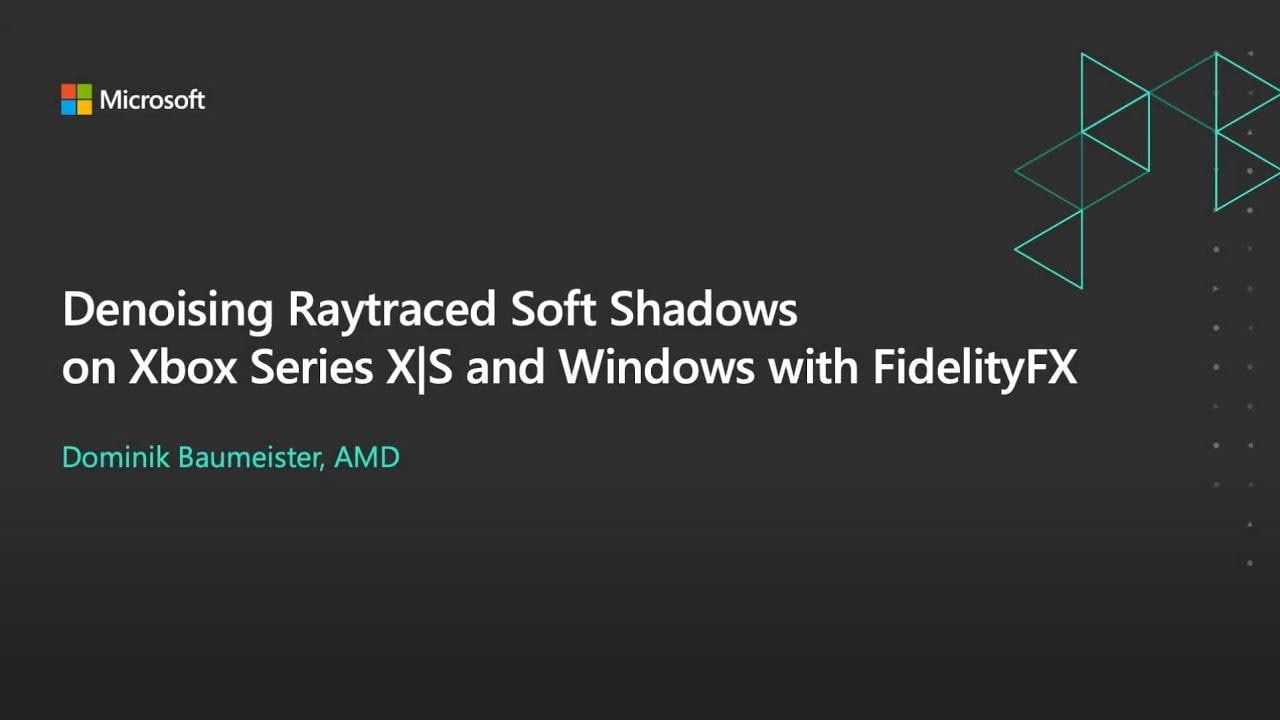
Microsoft® Game Stack Live: Denoising Raytraced Soft Shadows on Xbox Series X|S and Windows with FidelityFX
We explain how FidelityFX Denoiser allows for high-quality raytracing results without increasing rays per pixel, and deep dive into specific AMD RDNA™ 2-based optimizations that benefit both Xbox Series X|S and PC.

AMD RDNA™ 2 – DirectX® 12 Ultimate: Variable Rate Shading – YouTube link
Engineer Stephan Hodes provides a short description how VRS works, and how AMD’s FidelityFX Variable Shading technique can assist with integrating VRS into your engine.

A Review of GPUOpen Effects – YouTube link
This presentation will provide a technical overview of existing and new graphics effects available in GPUOpen and detail integration procedures for them.
Blogs
While you can currently find the documentation for our effects packaged with them on GitHub, we’ve written a few handy blogs to guide you over on our software blogs page. These include guides on how to implement FidelityFX Super Resolution and TressFX in Unreal Engine.
Radeon ProRender and HIP
AMD Radeon™ ProRender is a powerful physically-based path traced rendering engine that enables creative professionals to produce photorealistic images. We have several SDKs associated with it, along with support for HIP.

Radeon™ Rays
The lightweight accelerated ray intersection library for DirectX®12 and Vulkan®.

AMD Radeon™ ProRender SDK
AMD Radeon™ ProRender SDK is a powerful physically-based path traced rendering engine that enables creative professionals to produce stunningly photorealistic images.

Radeon™ Image Filtering Library
Harness the power of machine learning to enhance images with denoising, enabling your application to produce high quality images in a fraction of the time traditional denoising filters take.

Orochi
Orochi is a library which loads HIP and CUDA® APIs dynamically, allowing the user to switch APIs at runtime.

HIP Ray Tracing
HIP RT is a ray tracing library for HIP, making it easy to write ray tracing applications in HIP.
Videos
As well as videos on ProRender, we also have a video demonstrating how to use our very popular USD Hydra plugin for Blender.
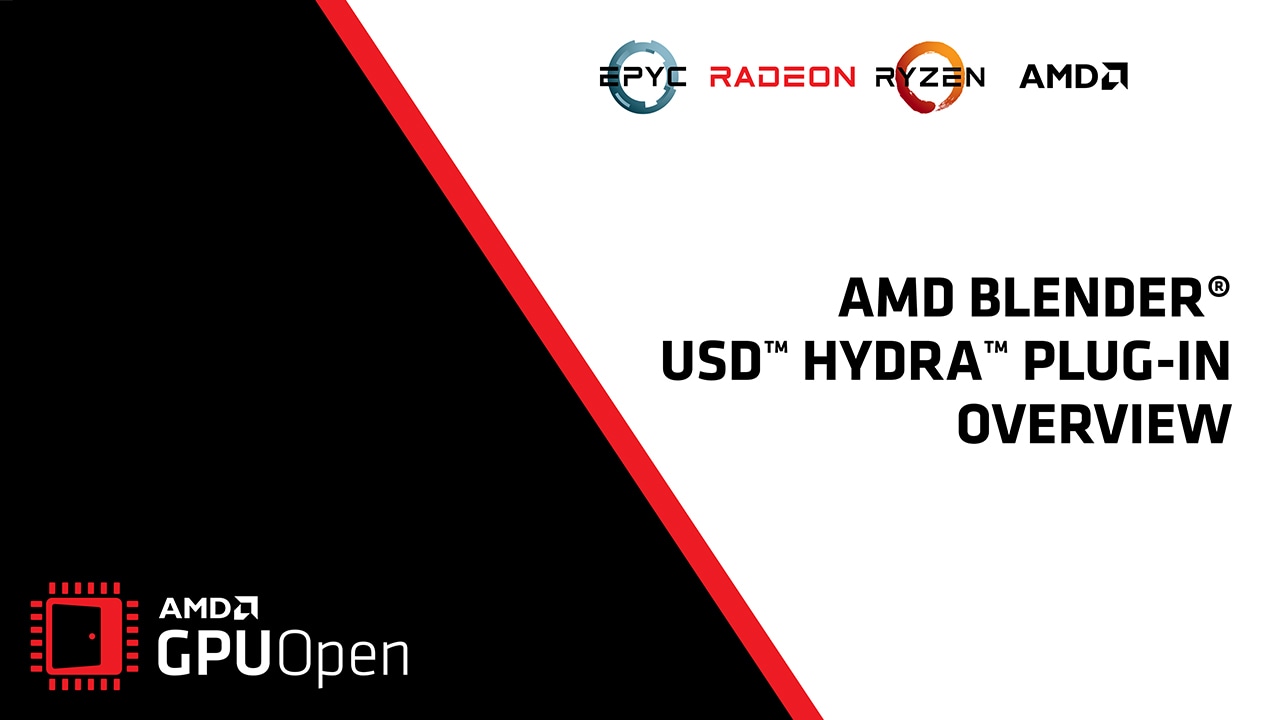
AMD Blender® USD™ Hydra™ Plug-in Overview – YouTube link
This tutorial video demonstrates how to use our USD Hydra plug-in for Blender®, which uses the power of Open Standards to enable you to reference and assemble USD™, and use MaterialX.

AMD RDNA™ 2 – Hardware-accelerated Ray Tracing in Radeon™ ProRender 2.0 – YouTube link
Introducing the new version of AMD Radeon™ ProRender 2.0 with AMD Radeon™ RX 6000 Series graphics cards support. Find out about the performance optimizations we achieved from the hardware ray tracing support.

Radeon™ ProRender Full Spectrum Rendering 2.0: The Universal Rendering API – YouTube link
Introducing the new version of Radeon™ ProRender 2.0, the Universal Rendering API.
Blogs
We keep developers regularly updated with what’s going on in the world of ProRender, HIP, and our associated plugins. There are too many to list here, but you can find them over on our software blogs page.
Tools not on GPUOpen
While we obviously recommend our own tools available here on GPUOpen, there are others you may also find useful, produced both by AMD and by third parties. Here’s a selection:

AMD μProf
AMD μProf is a software profiling analysis tool that provides event information unique to the AMD “Zen”-based processors and AMD INSTINCT™ MI Series accelerators. AMD μProf enables the developer to better understand the limiters of application performance and evaluate improvements.

RenderDoc
RenderDoc is a very popular free (MIT licensed) stand-alone graphics debugger. It provides straightforward single frame capture, and detailed examination of any application across a wide variety of APIs and platforms.

Microsoft® GPUView
GPUView is a development tool that reads logged video and kernel events from an event trace log (.etl) file and presents the data graphically to the user.
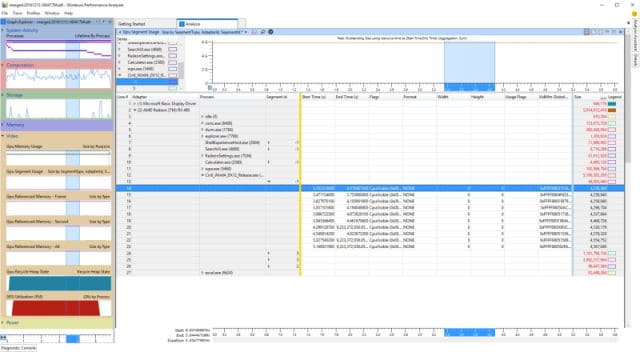
Windows® Performance Analyzer (WPA)
WPA is included in the Windows Assessment and Deployment Kit (Windows ADK). It is a tool that creates graphs and data tables of Event Tracing for Windows (ETW) events that are recorded by Windows Performance Recorder (WPR), Xperf, or an assessment that is run in the Assessment Platform.

Microsoft® PIX
Microsoft PIX provides performance tuning and debugging for DirectX® 12 games on Windows®.
Blogs
We often give guidance on using some of these other tools in our performance guides and blogs. You can find some of the blogs here:

Understanding Graphs in Radeon GPU Profiler and GPUView
Find out how to read and understand graphs in Radeon GPU Profiler and GPUView in order to optimize your game more effectively.

Integrating RenderDoc for Unconventional Apps
One of our engineers explains a few small code changes that can help you integrate RenderDoc for more unconventional applications.
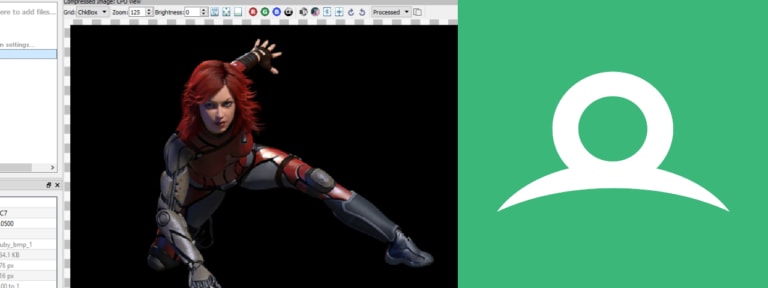
RenderDoc 1.8 has Compressonator support
When associated with DDS files, RenderDoc generates thumbnails for DDS formats and displays them in Windows Explorer. Compressonator Core provides functions for compressing and decompressing DDS files.

Microsoft PIX introduces AMD-Integrated plug-in with high frequency counter graph
Microsoft® PIX is the premiere integrated performance tuning and debugging tool for Windows game developers using DirectX® 12.

Microsoft PIX introduces AMD-Integrated plug-in with Occupancy Data Graph
Microsoft PIX is the premiere integrated performance tuning and debugging tool for Windows game developers using DirectX 12.

DirectX12 Hardware Counter Profiling with Microsoft PIX and the AMD Plugin
PIX is a performance tuning and debugging tool for Windows developers using DirectX 12.

Profiling video memory with Windows® Performance Analyzer
A guide to using the Windows Performance Analyzer tool, with a focus on video resources.
Explore GPUOpen!
This page is only the beginning. There are hundreds of pages on GPUOpen we haven’t linked to here.
You can use the menu at the top to explore further, or take a look at some starting points for further reading below:

Getting started: Development and performance
Looking for tips on getting started with developing and/or optimizing your game, whether on AMD hardware or generally? We’ve got you covered!

Latest news and updates for games and graphics developers from AMD’s GPUOpen.

Don’t miss our manual documentation! And if slide decks are what you’re after, you’ll find 100+ of our finest presentations here.

Explore our huge collection of detailed tutorials, sample code, presentations, and documentation to find answers to your graphics development questions.

Come see us in person! Or the next best thing – enjoy our large library of presentations from various developer events.

Words not enough? How about pictures? How about moving pictures? We have some amazing videos to share with you!

Discover our published publications.




